chapter 1 student movement for racial equality - Campus Activism
chapter 1 student movement for racial equality - Campus Activism
chapter 1 student movement for racial equality - Campus Activism
Create successful ePaper yourself
Turn your PDF publications into a flip-book with our unique Google optimized e-Paper software.
However, the ruling left untouched the university-owned dormitories, boarding<br />
houses and dining halls because these "are auxiliary enterprises which do not constitute<br />
part of the educational process of the university." At this time the lawsuit over<br />
university housing integration was still pending. There<strong>for</strong>e, on December 19, 1963 the<br />
CIC held a demonstration at Kinsolving. They sang, marched and protested the<br />
segregated housing policy (Daily Texan, December 20, 1963).<br />
In January, the Forty Acres Club served a black newsman working as associate<br />
press secretary to President Johnson. The club, which had practiced a strict "whitesonly"<br />
policy up until this point, began systematically admitting black guests the day<br />
following this incident. The club did not allow black members however until March of<br />
1965.<br />
STUDENT VICTORY: UT-OWNED HOUSING INTEGRATED<br />
During the Spring of 1964, the CIC and the Students <strong>for</strong> Direct Action continued<br />
their protests against dormitory segregation. Due to these protests and the fact that UT<br />
wanted a federal agency to underwrite a construction contract <strong>for</strong> new accomodations <strong>for</strong><br />
married <strong>student</strong>s, the regents approved integration <strong>for</strong> the proposed married <strong>student</strong>s'<br />
dormitory as well as <strong>for</strong> summer seminar participants at all dorms.<br />
In May of 1964 after years of legal stalling and a lack of financial support <strong>for</strong> the<br />
plaintiffs, the <strong>student</strong>s who had filed suit against UT housing integration dropped their<br />
case. In response, the regents voted 6-1 (with two abstaining) to remove all <strong>racial</strong><br />
barriers in housing. Also the first black faculty member was hired at this time - Dr. Ervin<br />
Perry, an assistant professor in the engineering department.<br />
Although the housing integration policy had been made known in May following<br />
the regents' meeting, its institutionalization began on June 1, 1964 when UT President<br />
Norman Hackerman sent out a memo representing both capitulation to pressures <strong>for</strong><br />
integration and a clever move to maintain the status quo. The memo resulted from a<br />
decision of the regents to integrate <strong>student</strong> housing and activities. It read:<br />
With respect to the admission and education of <strong>student</strong>s, with respect to<br />
the employment and promotion of teaching and nonteaching personnel,<br />
with respect to <strong>student</strong> and faculty activities conducted on premises owned<br />
or occupies by the university, neither the University of Texas nor any of<br />
its component institutions shall discriminate either in favor of or against<br />
any person on account of his or her race, creed, or color. (Duren, 1979<br />
- emphasis added).<br />
This ruling signaled capitulation on the part of the regents to <strong>student</strong> and faculty<br />
demands <strong>for</strong> <strong>racial</strong> <strong>equality</strong> within the institution. The victory followed ten years of<br />
difficult struggle on the part of southern blacks and five years of <strong>student</strong> protest at the<br />
university. The factors leading up to this change of heart on the part of the regents<br />
include widespread <strong>student</strong> and faculty support <strong>for</strong> complete integration, the publicitygrabbing<br />
protest tactics of black and white UT <strong>student</strong>s, the building momentum of the<br />
civil rights <strong>movement</strong>, President LBJ's humiliation over Texas' segregated university 10<br />
10 See Texan and Rag articles regarding scheduled Johnson speech at graduation ceremonies.<br />
15


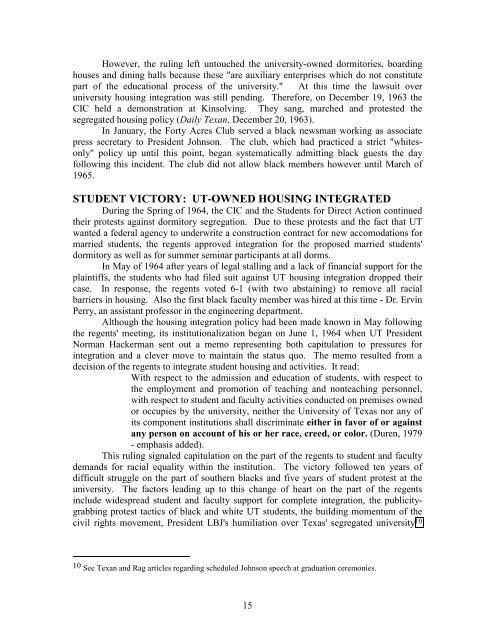
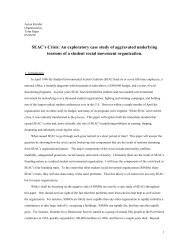
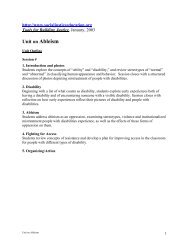

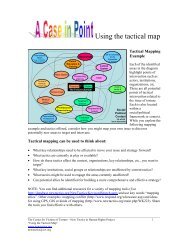
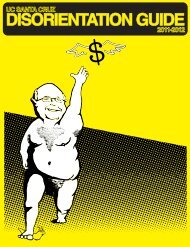

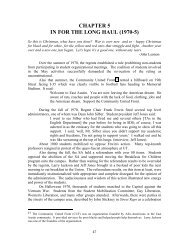


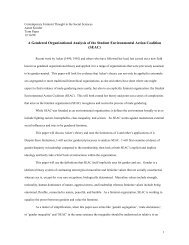



![Meaningful Student Involvement Research Guide [pdf] - SoundOut](https://img.yumpu.com/38822556/1/190x231/meaningful-student-involvement-research-guide-pdf-soundout.jpg?quality=85)